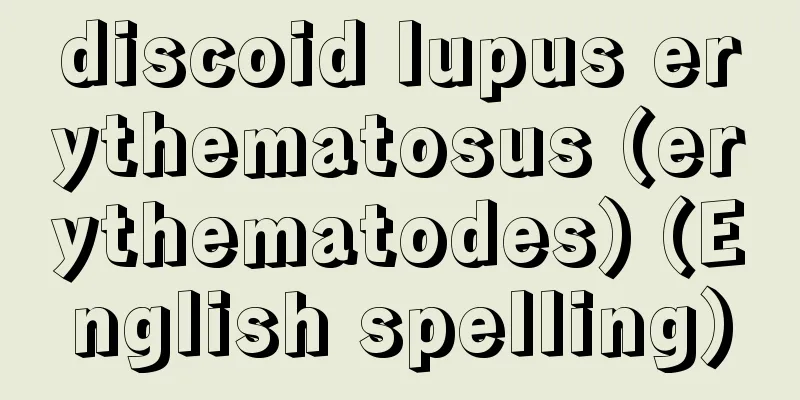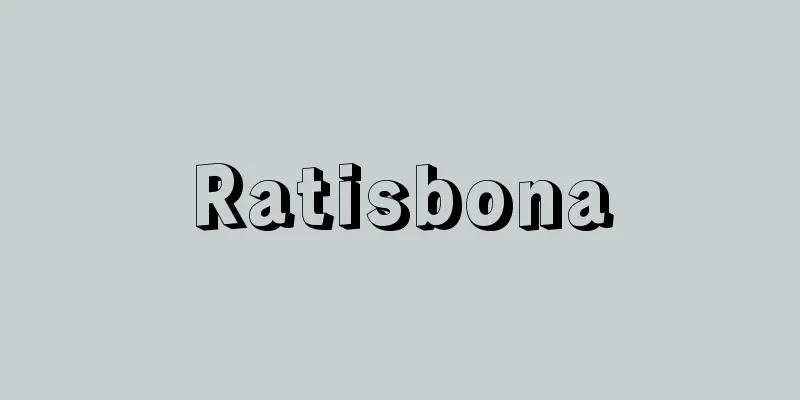Daitokuji Temple - Daitokuji

|
Located in Daitokuji-cho, Murasakino, Kita-ku, Kyoto City, this temple is the head temple of the Rinzai sect of Buddhism, Daitokuji school. Its mountain name is Mount Ryuhozan. Its principal image is Shaka Nyorai. It was founded in 1324 (Shochu 1), by Akamatsu Norimura and Daito Kokushi Shuho Myocho. It became a place of prayer for the retired Emperor Hanazono and Emperor Godaigo, and held its opening ceremony in 1326 (Kareya 1). Then in 1333 (Ganko 3, Shokei 2), Emperor Go-Daigo bestowed the title of "Honsho Musou Zenen" (Unparalleled Zen Garden in Japan), placing it at the top of the Five Mountains, but in 1386 (Genchu 3, Shitoku 3), Ashikaga Yoshimitsu demoted it to ninth place among the Ten Temples. In 1431 (Eikyō 3), the temple resigned from its position as one of the Ten Temples, and took an independent stance, maintaining a strict Zen style. In 1453 (Kyōtoku 2), most of the temple buildings were destroyed by fire, and shortly after rebuilding, the temple was destroyed again during the Onin War. In 1474 (Bunmei 6), Ikkyu Sojun took up residence at the temple and became the 48th abbot, and with the support of wealthy merchants in Sakai, he worked hard to restore the temple. In 1582 (Tensho 10), Toyotomi Hideyoshi buried Oda Nobunaga here, built the Bodaisho Soken-in temple within the temple grounds, and donated the temple land. Since then, feudal lords such as Asano Yoshinaga, Kuroda Nagamasa, and Maeda Toshinaga also donated various buildings within the temple, and the temple was finally completed and presented a magnificent sight. In addition, tea masters such as Sen no Rikyu and Kobori Enshu established hermitages within the temple grounds, deepening the connection with the tea ceremony, and many tea houses and tea gardens were built and are still preserved today. During the Edo period, the temple prospered with a red seal of over 2,000 koku of land, but after the Meiji Restoration, it lost its land and went into decline. In September 1876 (Meiji 9), it became independent and officially called itself the Daitokuji school. Within the vast temple grounds, there are buildings such as the Karamon Gate, Hojo (both national treasures), Chokushimon Gate, Sanmon Gate (mountain gate), Buddha hall, lecture hall, sleeping hall, kuri (kitchen storage), sutra repository, and bell tower (all of which are nationally important cultural properties). Of these, the Sanmon Gate was renovated by Sen no Rikyu in 1589 (Tensho 17), and is known for having enshrined a self-portrait on the top floor at that time, which incurred the displeasure of Toyotomi Hideyoshi and ultimately led to his execution. The Imperial Envoy Gate is said to have been moved from the south gate of the Imperial Palace, which was constructed during the Keicho era (1596-1615), and the Karamon Gate is a splendid Momoyama-era structure that is a relic of Jurakudai. The Hojo Garden has also been designated a Special Place of Scenic Beauty and Historic Site. The temple has a great number of treasures, including the Song and Yuan dynasties paintings "Kannon" and "Monkey and Crane" (both from the Southern Song dynasty), which are known as masterpieces of Mokkei paintings, as well as national treasures such as the colored silk painting of Daito Kokushi (Kamakura period), Emperor Go-Daigo's imperial handwriting, and the calligraphy of Kyodo Chigu (Southern Song dynasty), as well as many other important national cultural properties, including the Dragon and Tiger painting, the 500 Arhat statues, and the Willow Kannon statue. The number of sub-temples gradually increased, numbering around 60 during the Edo period, but today there are only 22, including Oubai-in, Shinju-an, Koho-an, and Ryugen-in. There are 204 branch temples, with a grounds of over 2,244 ares, and many gravestones of famous people, including the Oda clan and other feudal lords, and tea masters such as Murata Juko. Daruma Peak, Zuiunken, and Kanun-tei are known as scenic spots and have been given the title of Tokachi. [Toshiaki Hirai] "Ancient Temple Pilgrimage Kyoto 16: Daitokuji Temple" (1977, Tankosha)" ▽ "Daitokuji Temple" by Minamoto Toyomune and Sakamoto Manshichi (1958, Asahi Shimbun)" ▽ "Daitokuji Temple Genealogy" by Sato Torao (1939, Kawara Shoten)" ▽ "Collection of Daitokuji Temple Treasures compiled by the Imperial Gift Kyoto Museum (1933, Benrido)" Source: Shogakukan Encyclopedia Nipponica About Encyclopedia Nipponica Information | Legend |
|
京都市北区紫野(むらさきの)大徳寺町にある臨済(りんざい)宗大徳寺派の大本山。山号は竜宝山(りゅうほうざん)。本尊は釈迦如来(しゃかにょらい)。1324年(正中1)の創建で、開基は赤松則村(のりむら)、開山は大燈(だいとう)国師宗峰妙超(しゅうほうみょうちょう)。花園(はなぞの)上皇・後醍醐(ごだいご)天皇の祈願所となり、1326年(嘉暦1)開堂の式をあげた。ついで1333年(元弘3・正慶2)後醍醐天皇より「本朝無双禅苑(ぜんえん)」の勅翰(ちょっかん)を賜って五山の第一位に推されたが、1386年(元中3・至徳3)足利義満(あしかがよしみつ)により十刹(じっせつ)の第九位に下された。1431年(永享3)十刹の位を辞し、厳粛な禅風を守り在野的立場をとった。1453年(享徳2)火災により堂宇の大半を焼失、再建後まもなく応仁(おうにん)の乱にあってふたたび諸堂を失った。1474年(文明6)一休宗純(いっきゅうそうじゅん)が入住し第48世の住持となり、堺(さかい)の豪商の援助を得て再興に力を尽くした。1582年(天正10)豊臣(とよとみ)秀吉が織田信長を当寺に葬り、菩提(ぼだい)所総見(そうけん)院を寺内に建立して寺領を寄進し、これより浅野幸長(よしなが)、黒田長政(ながまさ)、前田利長(としなが)らの諸大名も寺内に諸院を寄進したため、ようやく諸堂完備し盛観を呈した。また千利休(せんのりきゅう)、小堀遠州(こぼりえんしゅう)といった茶人も山内に庵(いおり)を結び、ために茶道との縁由を深め、現に多くの茶室・茶庭が造営され今日に伝えられている。 江戸時代には、寺領2000石余の朱印を有して寺門すこぶる繁栄したが、明治維新後は寺領を失って衰微。1876年(明治9)9月独立して大徳寺派を公称した。広大な寺域には、唐(から)門、方丈(ほうじょう)(ともに国宝)、勅使(ちょくし)門、三門(山門)、仏殿、法堂(はっとう)、寝堂、庫裡(くり)、経蔵、鐘楼(以上、国重要文化財)などの伽藍(がらん)が建つ。そのうち、三門は1589年(天正17)千利休の修造したもので、このとき楼上に自像を安置したため、豊臣秀吉の不興を買い、ついに死を賜る原因となったことで知られる。また勅使門は慶長(けいちょう)年間(1596~1615)に造構された皇居の南門を移したものといわれ、唐門は聚楽第(じゅらくだい)の遺構で華麗な桃山建築である。また方丈庭園は特別名勝・史跡に指定されている。寺宝は非常に多く、本坊には牧谿(もっけい)画の代表作として知られる『観音(かんのん)図』『猿鶴(えんかく)図』(ともに南宋(なんそう)代)をはじめとする宋元画や、絹本着色大燈国師像(鎌倉時代)、後醍醐天皇宸翰(しんかん)御置文、虚堂智愚墨蹟(南宋代)などの国宝、竜虎(りゅうこ)図、五百羅漢像、楊柳(ようりゅう)観音像など多くの国重要文化財を所蔵している。 塔頭(たっちゅう)はしだいに増加し、江戸時代には約60を数えたが、現在は黄梅院、真珠庵(あん)、孤篷(こほう)庵、竜源院など22院のみである。末寺は204か寺あり、境内は6万8000余坪(2244アール)あって、織田氏その他の諸大名や村田珠光(じゅこう)などの茶人といった著名な人々の墓碑も多く、達磨(だるま)峰、瑞雲(ずいうん)軒、看雲(かんうん)亭などは名勝の地として十勝の称を与えられている。 [平井俊榮] 『『古寺巡礼 京都16 大徳寺』(1977・淡交社)』▽『源豊宗・坂本万七著『大徳寺』(1958・朝日新聞社)』▽『佐藤虎雄著『大徳寺系譜』(1939・河原書店)』▽『恩賜京都博物館編『大徳寺名宝集』(1933・便利堂)』 出典 小学館 日本大百科全書(ニッポニカ)日本大百科全書(ニッポニカ)について 情報 | 凡例 |
>>: Great calendar - Daitoureki
Recommend
Kurdish - Kurd (English spelling)
An ethnic group whose native language is Kurdish,...
Sutama [town] - Sutama
A former town in Kitakoma County in northern Yaman...
Marbled - Shimofuri
It is meat with fine fats in a marbled pattern be...
Iruba - Iruba
...On the other hand, economists such as Nitti ar...
Zygaenodes leucopis (English spelling) Zygaenodesleucopis
…The boll weevil Araecerus fasciculatus is distri...
Gifu butterfly - Gifu butterfly
A butterfly belonging to the family Papilionidae ...
Kiriumi-chi - Mukaiji
The title of a classical Shakuhachi piece. The cha...
Indian Theatre
There are various opinions about the origin of In...
Opening and closing surge - Opening and closing surge
Abnormal voltage that occurs in electronic circuit...
Relief - Ukibori
A sculptural technique in which an image is raised...
Hera
...They organized a religious community around th...
Chubei Tanida
Year of birth: Year of birth and death unknown. A ...
Rōsaibushi - Rōsaibushi
A popular song from the early Edo period. It is a...
Late payment tax - Entaizei
Tax law has provisions to protect the rights of t...
Professional negligence resulting in death or injury
The crime of failing to exercise the necessary car...









